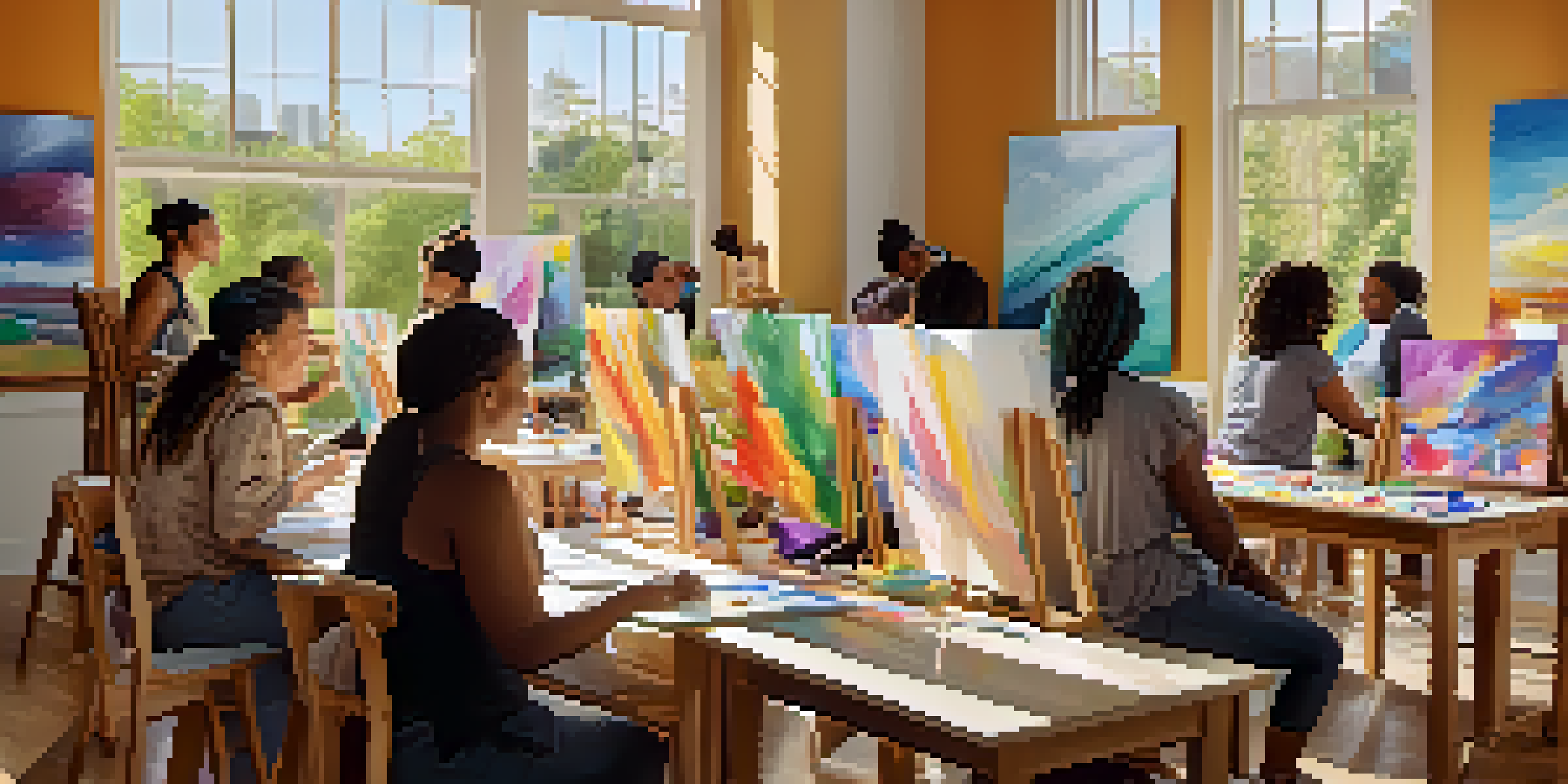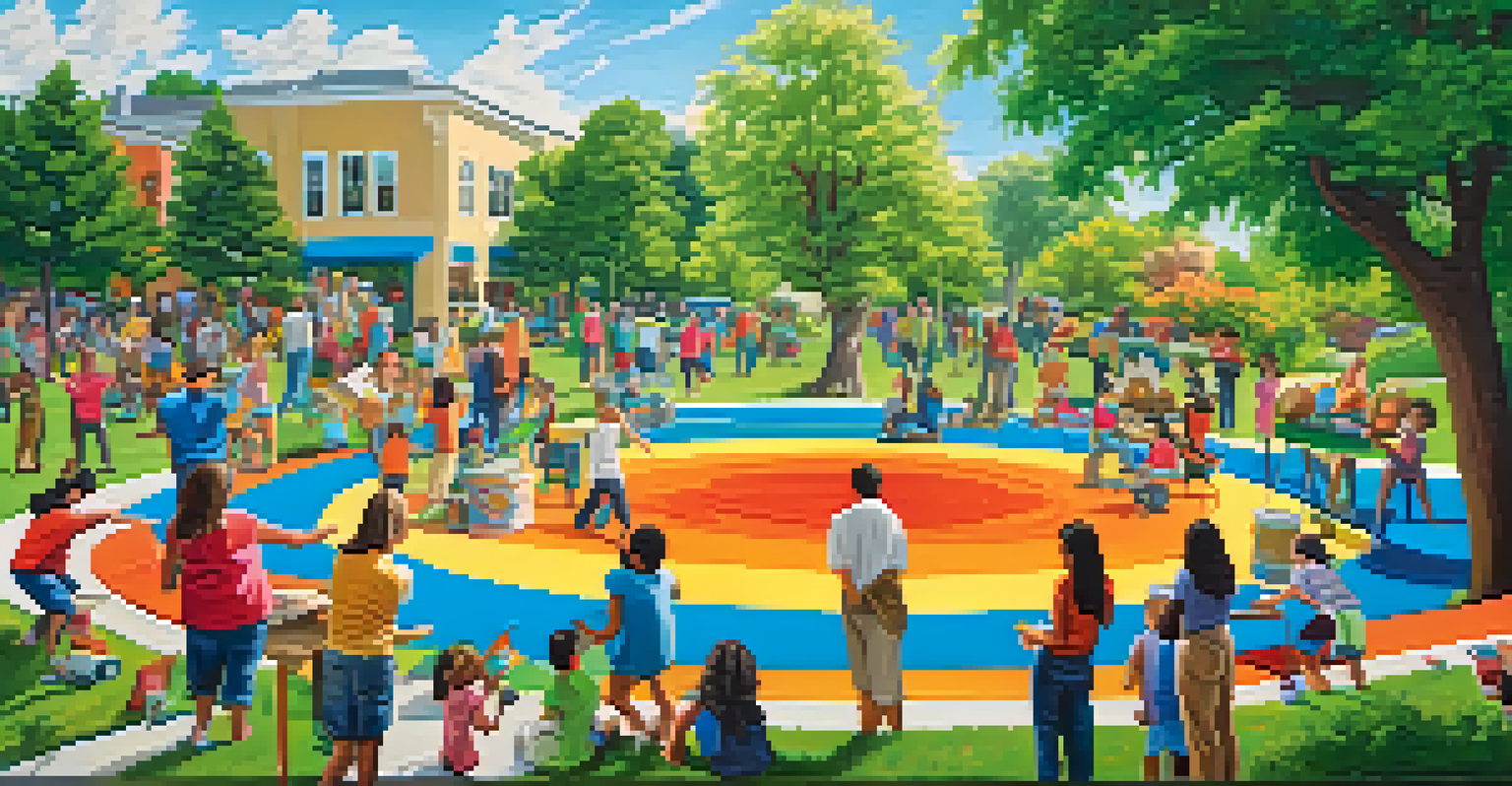Art as a Tool for Healing: The Role of Art in Therapy

Understanding the Connection Between Art and Healing
Art has been a part of human expression for centuries, serving not only as a form of creativity but also as a means of healing. The process of creating art can evoke deep emotional responses, allowing individuals to explore their feelings in a safe space. By tapping into the creative process, people can often access thoughts and emotions that are difficult to express verbally.
Art is not what you see, but what you make others see.
When engaging in artistic activities, individuals may find a sense of relief from stress and anxiety. This is particularly important in therapeutic settings, where the act of creation can serve as a powerful emotional release. Whether through painting, drawing, or sculpting, the act of making art can facilitate a deeper understanding of one’s self and promote healing.
Moreover, art therapy has gained recognition as a legitimate therapeutic practice. Licensed art therapists use creative techniques to help clients work through trauma, grief, and other emotional challenges. This approach not only fosters healing but also encourages personal growth and self-discovery.
The Science Behind Art Therapy
Research has shown that engaging in artistic activities can lead to measurable improvements in mental health. Studies indicate that art can lower levels of cortisol, the stress hormone, thus promoting a calmer state of mind. Additionally, creating art can activate the brain's reward system, leading to feelings of joy and fulfillment.

Art therapy often incorporates various forms of expression, including visual arts, music, and dance, making it a versatile tool for healing. By using these mediums, individuals can explore their emotions in ways that are often less intimidating than traditional talk therapy. This can be especially beneficial for those who find it difficult to articulate their feelings.
Art as a Healing Expression
Creating art allows individuals to explore emotions and find relief from stress in a safe and creative environment.
Furthermore, the therapeutic effects of art are not limited to those actively creating. Observing or engaging with art can also provide comfort and inspiration, allowing individuals to connect with their experiences on a different level. This collective connection to art can enhance the healing process, promoting a sense of community and understanding.
Artistic Expression: A Pathway to Self-Discovery
One of the most significant benefits of art therapy is its ability to foster self-discovery. As individuals create art, they often uncover hidden emotions and thoughts, leading to greater self-awareness. This process can be enlightening, allowing individuals to confront and process feelings they may have buried.
The greatest respect an artist can pay to music is to give it life.
For many, the journey of creating art becomes a mirror reflecting their inner world. This reflection can lead to powerful insights about personal struggles, relationships, and aspirations. In this way, art serves as both a tool for expression and a vehicle for personal growth.
Additionally, the act of creating something tangible can empower individuals, giving them a sense of agency over their healing journey. It reinforces the idea that they can control aspects of their lives even when other areas feel tumultuous. This empowerment can be transformative, leading to increased confidence and resilience.
Art Therapy in Various Settings
Art therapy is versatile and can be integrated into various settings, including hospitals, schools, and community centers. In a medical environment, art therapy can help patients cope with the emotional challenges of illness, fostering a sense of normalcy and allowing for expression beyond medical diagnoses.
In schools, art therapy can be particularly beneficial for children dealing with trauma, bullying, or learning disabilities. It provides a non-verbal outlet for expression, helping them process their experiences in a supportive environment. This can lead to improvements in self-esteem and social skills.
Art Therapy Enhances Well-Being
Research shows that art therapy can improve mental health by lowering stress hormones and activating the brain's reward system.
Community art programs also play a crucial role in healing. They create opportunities for individuals to come together, share their experiences, and support one another through the creative process. This sense of belonging can be incredibly healing, promoting mental wellness and connection.
The Role of Art in Grief and Loss Therapy
Grief can be an overwhelming experience, and art therapy offers a unique way to navigate this challenging emotion. Creating art can provide an outlet for expressing sorrow and reminiscing about lost loved ones. This process allows individuals to externalize their feelings, making them easier to understand and cope with.
Through artistic expression, individuals can honor the memories of those they have lost while simultaneously processing their grief. Whether through drawing, painting, or crafting, these creative acts can serve as a tribute, offering a tangible way to celebrate a loved one’s life.
Moreover, art therapy can facilitate conversations about loss that may be difficult to initiate. By engaging in creative activities, individuals can feel more comfortable discussing their feelings, ultimately leading to healing conversations and connections with others who share similar experiences.
The Therapeutic Power of Mindfulness in Art
Mindfulness is an essential component of art therapy, encouraging individuals to focus on the present moment while creating. This practice can help reduce anxiety and promote a sense of calm, making it easier to engage with one’s emotions. By being present during the artistic process, individuals can find clarity and peace amidst chaos.
As they immerse themselves in the act of creation, participants often experience a meditative state. This state allows for deeper reflection on thoughts and feelings without judgment, creating a safe space for exploration. The combination of mindfulness and artistic expression can lead to profound insights and emotional release.
Mindfulness in Art Promotes Clarity
Incorporating mindfulness into art therapy helps individuals focus on the present, fostering emotional clarity and deeper reflection.
Incorporating mindfulness into art therapy can also enhance the overall therapeutic experience. It encourages individuals to engage with their emotions fully, fostering a deeper connection to their artwork and its meaning. This holistic approach allows for a more enriching healing journey.
Conclusion: Embracing Art as a Healing Tool
Art as a tool for healing offers a unique pathway for emotional expression and self-discovery. Its ability to facilitate understanding and promote personal growth makes it a vital component of therapy. Whether through professional art therapy or personal creative endeavors, engaging with art can lead to transformative healing experiences.
As we continue to explore the benefits of art therapy, it’s essential to recognize that everyone’s healing journey is unique. What resonates with one individual may differ for another, but the power of art remains constant in its ability to connect and heal.

Ultimately, embracing art as a healing tool allows individuals to navigate their emotions, find solace, and emerge stronger. In a world that often feels overwhelming, art offers a refuge – a place where creativity and healing coexist.